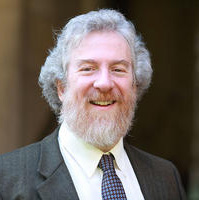Shabbat Eve (Part 1): Metaphors of Marriage

Many are familiar with the custom of chanting the last chapter of Proverbs (Eishet Hayil; A Woman of Valor) as part of the ritual for those gathered around the table for Shabbat dinner on Friday night.
Two images come to my mind.
The first is of Friday night in the crowded Hadar Okhel (Dining Hall) at Camp Ramah in New England, with several hundred hungry and boisterous teens. They sing a few songs with ruah (spirit and energy). Then the room becomes quiet and two young counselors sing softly, bringing this ancient text (whether about husbands and wives or mystical union between Shabbat, Shekhinah, and the Jewish people) reverently alive in this unlikeliest of communities—so much so that our 17-year-old son, Yishai, chants these words almost every Friday night that he is home.
The second is in Dayton, Tennessee, where, responding to “Noda bashe’arim ba’alah” (Her husband is known at the city gates; Prov. 31:23), Rachel Held Evans stands with a sign “Dan is Awesome.” Rachel Evans, a self-described “skeptic, a creative, and a follower of Jesus, figuring out this journey of faith one shaky step at a time,” spends a year trying to live out the biblical understanding of womanhood. Recounting the effort, which was not without challenges, in A Year of Biblical Womanhood, she describes finding her understanding of our text transformed when she speaks with a Jewish friend.
Her friend told her men were the ones who memorized the passage as a way of praising women—her friend’s husband sings it to his wife at every Sabbath meal. “That whole passage got turned around for me when I started looking at it from a more Jewish perspective and seeing it less as something that God expects all women to do and more as a way of praising what women have already accomplished,” she told NPR. The text inspired her to start a Women of Valor Series on her well-known blog, with truly inspiring testimonies.
The custom of reciting this text on Friday night is certainly kabbalistic in origin, with a number of sources identifying the woman as the Shekhinah, “with the 22 verses corresponding to 22 channels that are opened on the Eve of Shabbat to pour forth blessing from the uppermost pool, above all mystic crowns,” as cited by B. S. Jacobson in The Sabbath Service.
In contemporary times, the metaphor is not so clear. Many see it as an elegy from husband to wife, and more than a few concerns have been articulated that the text affirms and even advocates for a traditional and subservient role for women. Others, including a number of feminist scholars and leaders, retain an attachment to the text—finding within it ancient affirmation for a variety of leadership roles for women, and recalling midrashic sources that identify specific women leaders within the text. For example, “She opens her mouth with wisdom” (Prov. 31:26) is seen as referring to the woman who saved a city by speaking with Joab (II Sam. 20:16) or as Serah, the daughter of Asher (Gen. 46:17).
History and devotion, mysticism and melodies, have combined to plant this text firmly in the Shabbat practice of the Jewish people, and it is heard on college campuses, at summer camps, in hospitals, on military bases, and around family tables the world over.
Adam Wall gives an account of how this custom at camp began.
Here is a recording by Pizmon, the Jewish a capella group of JTS, Columbia, and Barnard.
As always, I am interested in hearing comments and reflections on these thoughts about prayer and liturgy. You may reach me at sabarth@jtsa.edu.



